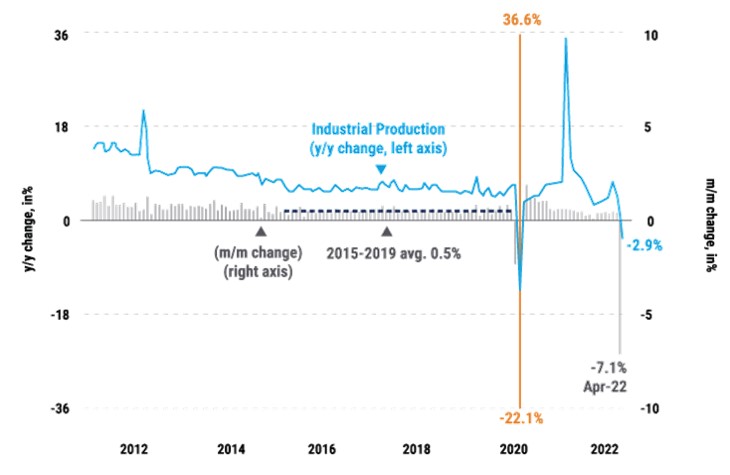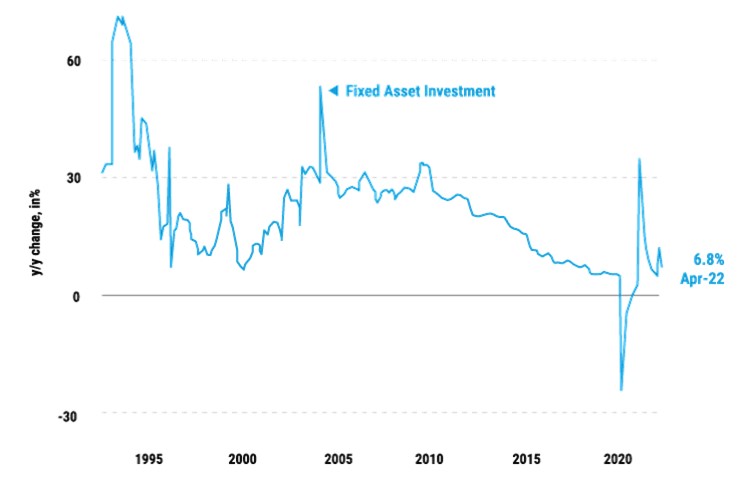Investment Strategies
Seeking A Sustained Asia Rebound Amid Rising Risks

PineBridge Investments asks what sort of market rebound in Asia is likely at a time of economic and geopolitical risks.
The following commentary on the Asian economic and financial landscape comes from PineBridge Investments, and its chief economist, Markus Schomer. As readers can imagine, the editorial team at this news service are regularly regaled with wealth managers’ views on what they think will happen in markets, and we like to pick out those views that are unusually detailed, or contrarian, or have a specific angle. Schomer’s article adds to debate and we hope readers find it useful.
As with all guest contributions, the editors of this news service don’t necessarily share views of outside commentators. Jump into the debate and make your view heard! Email tom.burroughes@wealthbriefing.com
Our outlook for Asia for 2022 was pushed off track by another
exogenous shock in the form of Russia’s invasion of neighbouring
Ukraine. We were looking for the global economy to move past the
Covid pandemic and settle into the new business cycle this year.
Instead, we are now faced with a sharp exacerbation of inflation
pressures that are depressing economic sentiment and have raised
expectations of more aggressive monetary policy tightening,
particularly in key developed economies. That, in turn, is
driving rising recession concerns that are weighing on global
financial markets.
Global monetary policy is far from synchronised, however. Many
emerging market central banks have been raising rates for well
over a year now, while the People’s Bank of China is actually
cutting rates. The reason why China is on a very different policy
trajectory is its “dynamic zero-Covid” policy, which has seen
rolling lockdowns on its economy. Recently some restrictions have
eased, allowing for more mobility but with frequent testing.
Purchasing managers’ indices have pointed to a sharp slowdown and
possibly a contraction in Chinese GDP growth in the second
quarter, which seriously threatens the country’s growth target.
In its April 2022 World Economic Outlook, the
International Monetary Fund (IMF) cut its China forecast by more
than a full percentage point to 5.1 per cent from its
previous forecast in October 2021, acknowledging this development
(1).
Growth Is slowing in China, but government stimulus is
underway
Industrial Production Posted Its Second Biggest Drop Since 2020

Annual Growth in Fixed Asset Investment Remained Positive,
Highlighting Efforts to Stabilise Growth

Source: Macrobond, Bloomberg, PineBridge Investments
Calculations as of 16 May 2022
The Chinese government has moved to implement more policy
stimulus. Yet, it is not just zero-Covid that is weighing on the
economy, but also problems in the property sector, which are
complicating attempts to use traditional stimulus tools such as
increasing credit supply or cutting interest rates. China’s
outlook has deteriorated the most among the major Asian economies
since our initial 2022 outlook publication.
Another global outlier in terms of monetary policy is Japan,
where the central bank is keeping the 10-year government bond
yield near zero. Japan started the year with another GDP
contraction. The poor first quarter performance was the result of
yet another round of Covid-related restriction, highlighting how
much the country lags the US and Europe, which have largely
removed most Covid measures. But the economy should rebound in
the spring, and continued monetary and fiscal policy support,
together with stronger exports boosted by a weaker yen, should
extend that recovery well into next year. In fact, the IMF
forecasts about the same rate of GDP growth for the US, the
eurozone, and Japan in 2023 (1). It would be remarkable if that
were achieved with three dramatically different monetary policy
regimes.
India’s economy slowed sharply in the first three months as Covid
restrictions held down growth to an annualised rate of just 1.2
per cent. Yet purchasing managers indices suggest growth should
pick up again in the second quarter as restrictions are lifted.
The main risk for India’s outlook is the surge in oil prices. The
country imports 85 per cent of the oil it consumes, which means
that oil costs will put increased strain on India’s current
account, potentially requiring higher interest rates or a weaker
currency. Yet the latter is not desirable, as it would fuel more
inflation. Hence, tighter monetary policy is in the cards, which
means downside risks to growth are on the rise. In June, the
Reserve Bank of India raised the repo rate by 50 basis points to
4.90 per cent and announced a gradual withdrawal of accommodative
measures implemented during the pandemic in a bid to keep
inflation within target.
The economic outlook for Asia is looking a bit weaker compared
with the end of 2021, when we wrote our initial outlook. The
Russian invasion in Ukraine has pushed up inflation even more,
raising the risk that central banks may go too far in their
attempts to counter the price surge. China is subject to more
Covid containment measures since the pandemic began. On the flip
side, a weaker growth outlook also means fewer rate hikes and
less restrictive monetary policy. We would need to see a more
sustained market rebound, and a turnaround in inflation, to
(quickly) lead to a pause in the rate-hike cycle and fading risks
of recession.
Footnote,
1, International Monetary Fund, April 2022, https://www.imf.org/en/Publications/WEO/Issues/2022/04/19/world-economic-outlook-april-2022